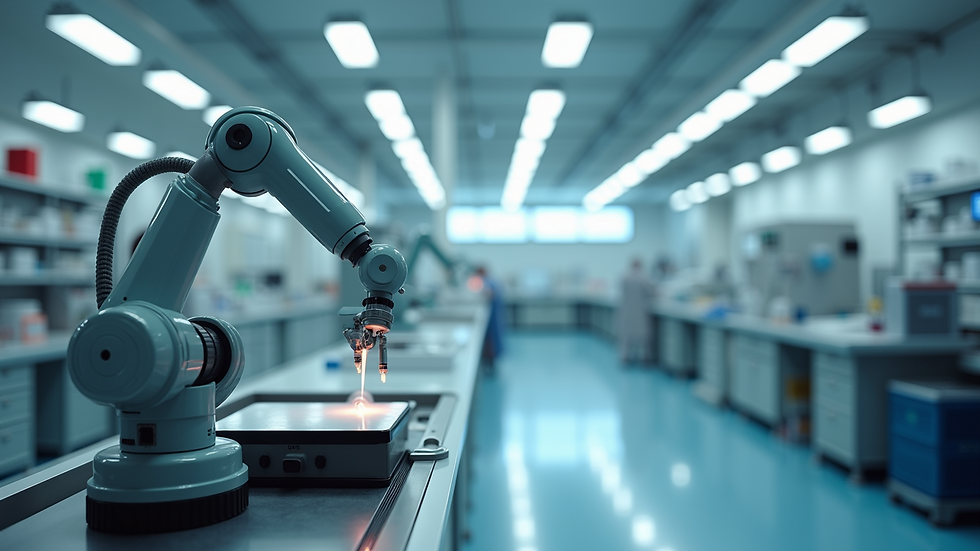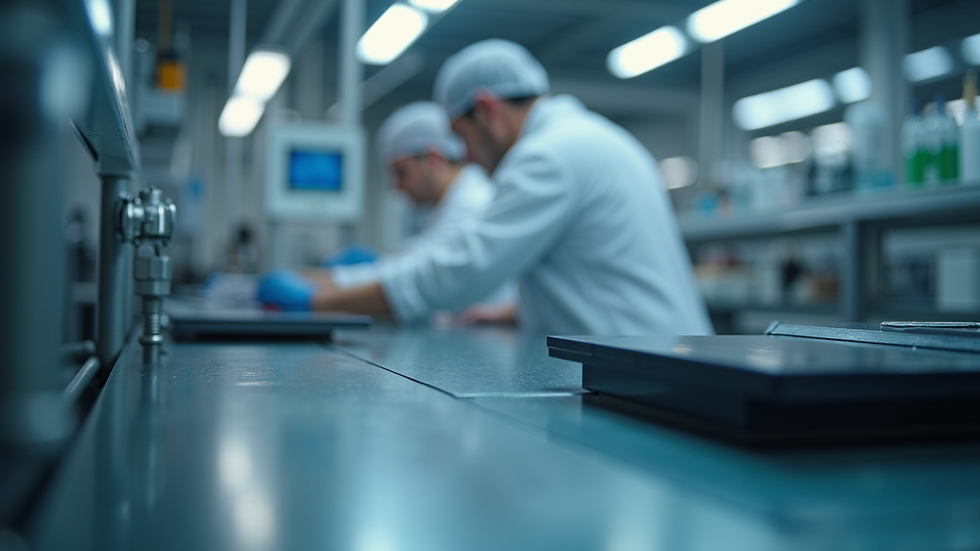Revolutionizing Processes in Pharmaceutical Manufacturing
- Farbe Firma
- Jul 14
- 4 min read
The pharmaceutical industry is at a pivotal point, shifting towards more efficient and innovative methods. As technology continues to advance, the way we produce medications and manage pharmaceutical processes is evolving tremendously. This blog post will delve into various pharmaceutical production techniques that are transforming the industry, discuss the significance of these advancements, and explore the educational paths that lead to careers in this dynamic field.
The Shift Towards Automation in Pharmaceutical Production
In recent years, automation has emerged as a cornerstone in pharmaceutical production. High-tech machines and robotics are streamlining production lines, allowing for increased precision and reduced human error. According to a report by the International Society for Pharmaceutical Engineering (ISPE), the use of automation in manufacturing can lead to a 30% increase in production efficiency.

For instance, companies like Pfizer are employing automated systems for packing processes, which reduce manual labor and improve consistency. These systems can also operate 24/7, significantly accelerating the rate at which medicines reach the market. Furthermore, automation can be integrated with real-time data analytics, which helps in monitoring production quality and compliance, ensuring that products meet stringent health regulations.
Implementing Continuous Manufacturing in Pharmaceutical Facilities
Another revolutionary process is the implementation of continuous manufacturing. Unlike traditional batch production, which often involves long lead times and extensive downtime, continuous manufacturing allows for a seamless flow of production. This method is characterized by ongoing processes that can significantly cut costs and improve the overall productivity of pharmaceutical manufacturing.

One leading example of continuous manufacturing is the work being done by Novartis with their Kymriah product, a CAR T-cell treatment. Novartis has transitioned from batch-based to continuous flow processing, resulting in faster turnaround times from the lab to patient treatment. This shift not only improves efficiency but significantly reduces the risk of contamination, a major concern in drug manufacturing.
What Degree for Pharmaceutical Manufacturing?
Entering the pharmaceutical manufacturing sector typically requires a solid educational background. A degree in pharmaceutical sciences, chemical engineering, or biology is often essential. Many universities offer specialized programs that focus on subjects relevant to this field, including biopharmaceutical technology and quality assurance.
Graduates from these programs can pursue various roles such as process development scientists, quality control analysts, or regulatory affairs specialists. Moreover, pursuing certifications related to Good Manufacturing Practices (GMP) can further enhance job prospects, as it demonstrates knowledge about the regulatory environments in which pharmaceutical companies operate.
Embracing Artificial Intelligence and Data Analytics
Artificial Intelligence (AI) and advanced data analytics are emerging as transformative forces in pharmaceutical production. AI technologies can analyze massive datasets to predict trends, optimize production schedules, and improve drug formulation processes. A study published in the Journal of Pharmaceutical Innovation found that employing AI in drug development can reduce the time it takes to bring a new drug to market by an average of 25%.

By integrating AI-based systems, companies can streamline decision-making processes. For example, Johnson & Johnson utilizes AI to discover and develop new pharmaceuticals efficiently. The use of predictive analytics enables them to identify which compounds are most likely to succeed in clinical trials, saving both time and resources in the drug development process.
Sustainability in Pharmaceutical Manufacturing
As the global focus shifts towards sustainability, pharmaceutical companies are also adapting their production techniques to be more eco-friendly. Sustainable manufacturing practices not only benefit the environment but can also enhance a company's reputation and, ultimately, their bottom line.
Companies are adopting greener solvents and raw materials, as well as optimizing their energy use in production processes. The Lean and Green initiative, for example, aims to reduce waste and energy consumption, yielding a two-fold advantage of cost saving and environmental responsibility.
Furthermore, integrating circular economy principles into pharmaceutical production can lead to innovative waste management solutions. For instance, some companies are exploring the possibility of recycling used medicinal compounds to extract valuable materials for future drug development.
The Future of Pharmaceutical Production Techniques
The future of pharmaceutical production is clearly leaning towards technology-driven solutions. With the rise of automation, continuous manufacturing, AI, and sustainable practices, the industry is set to revolutionize the way medications are produced and delivered. Staying informed and adapting to these changes is crucial for professionals in the field.
For those interested in pursuing a career in pharmaceutical manufacturing, getting an education focused on new technologies and methodologies will be key. Em bracing innovation is not just a trend; it’s the future of healthcare. By understanding these pharmaceutical manufacturing processes, you will be well-equipped to thrive in this ever-evolving landscape.
Moreover, collaboration across disciplines will play a significant role in the evolution of pharmaceutical production techniques. By working in tandem with engineers, data scientists, and healthcare professionals, companies can develop more effective strategies to meet the needs of patients faster and more efficiently than ever before.
The enhancements in pharmaceutical production techniques signal a new era for the industry where quality, speed, and sustainability are prioritized—benefiting both manufacturers and patients alike.



Comments